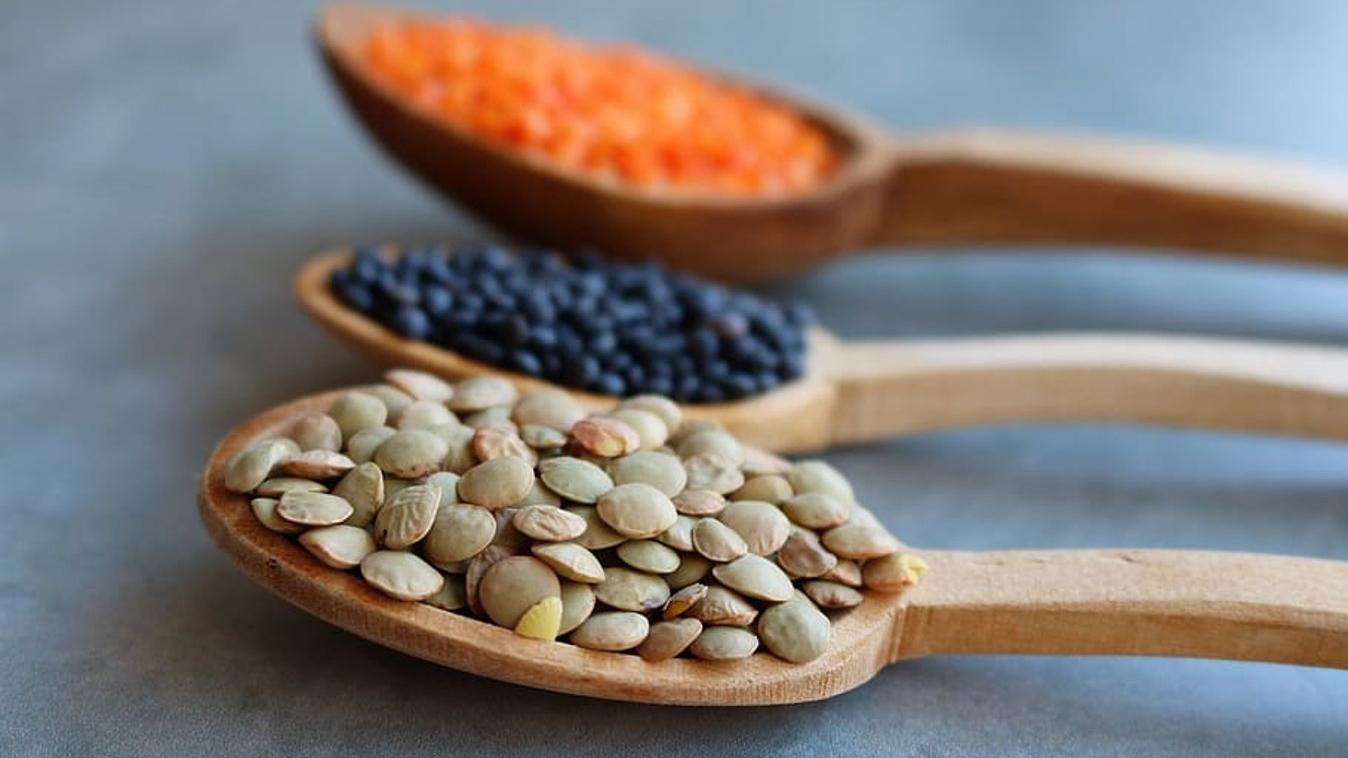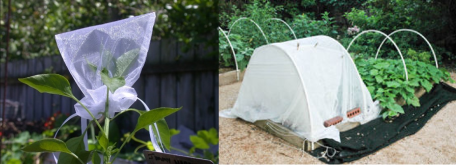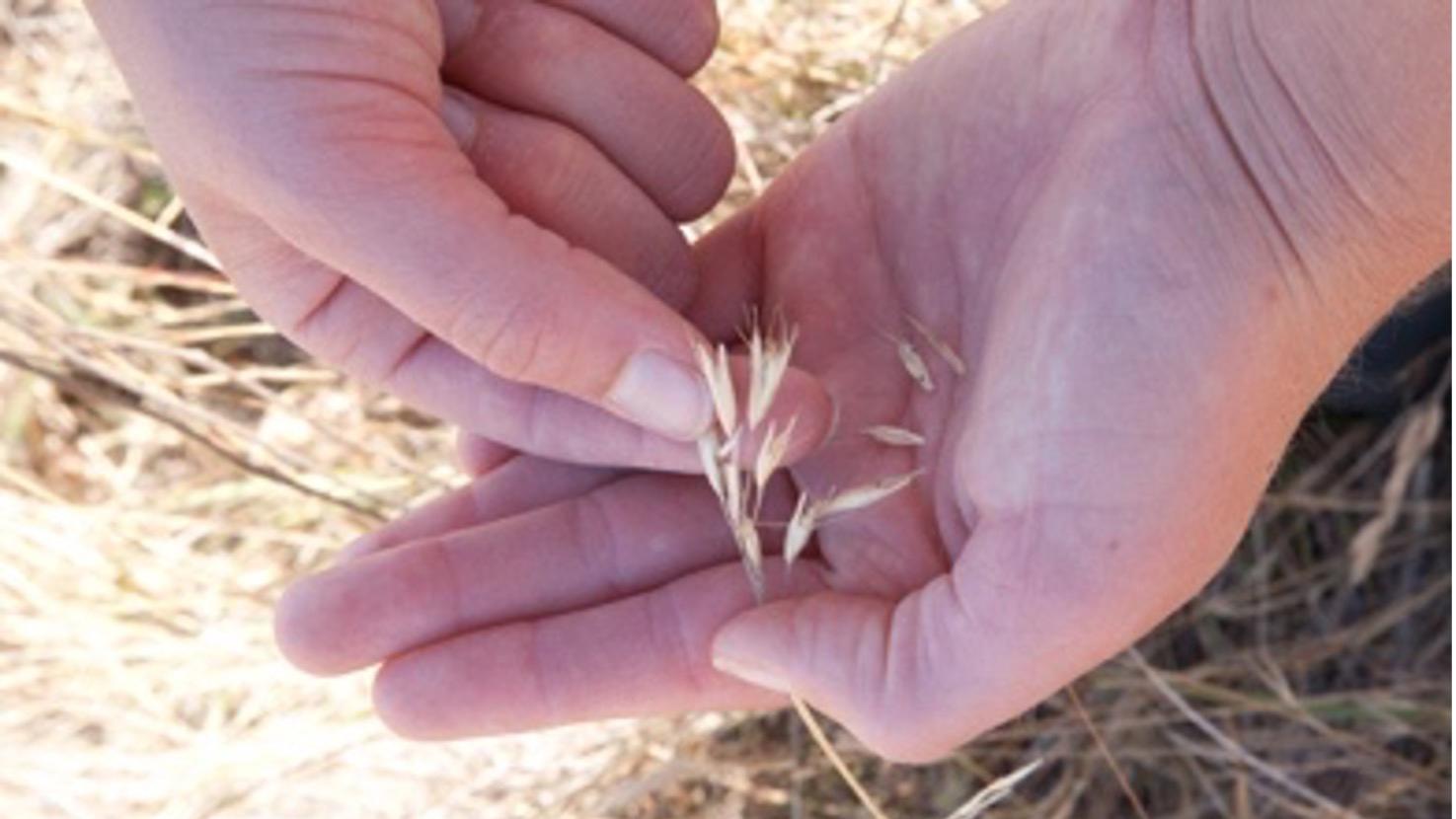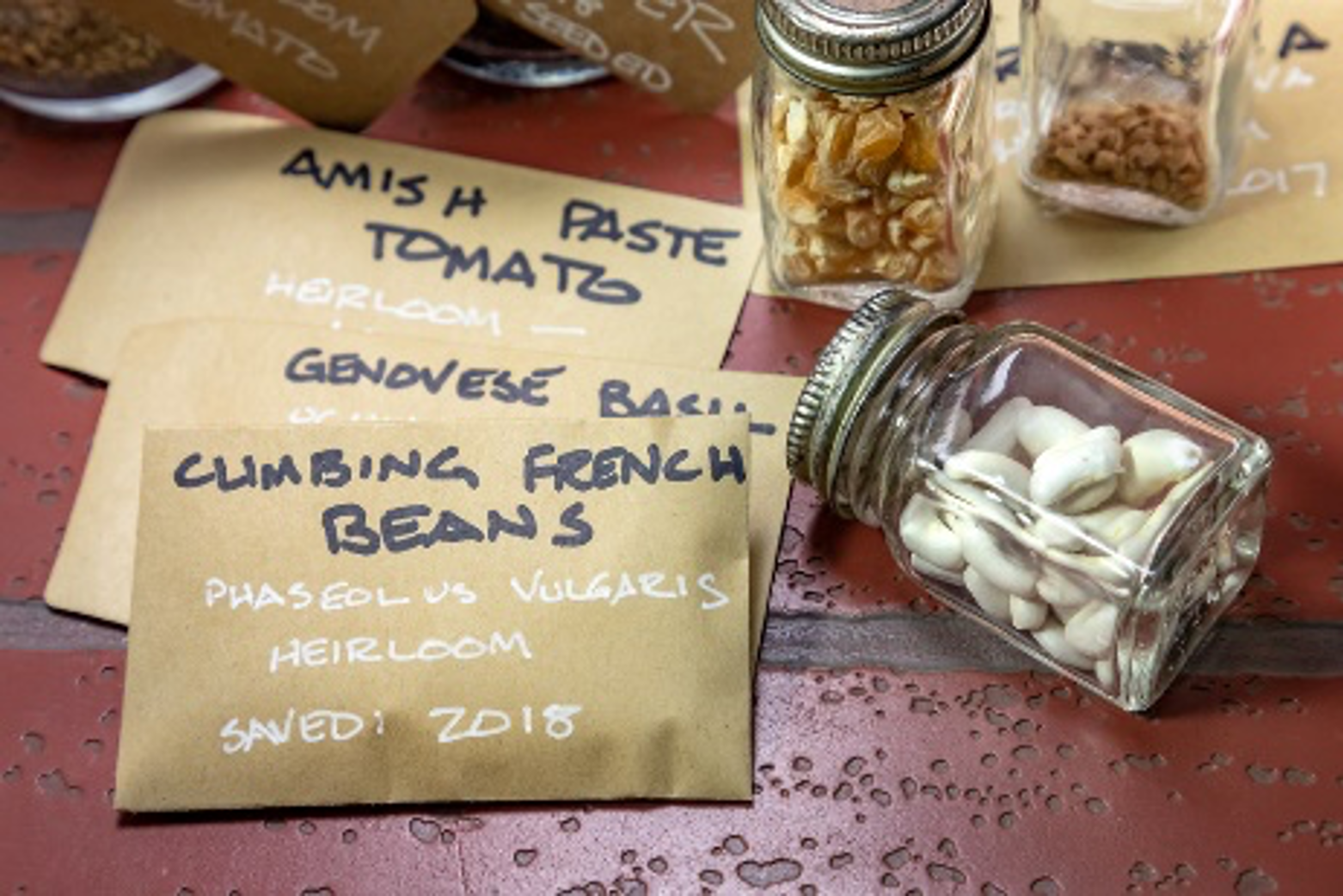Saving Seeds: Select, Collect, Store, Sow

When you save seed you participate in an ancient tradition that preserves genetic and cultural diversity. This is particularly true for edibles. Today, a handful of companies sell the vast majority of seeds and most varieties of agricultural crops have been lost. Gardeners who save seed help buck that trend. Learn more about saving seed.
Benefits of saving seed:
• More variety. Starting plants from seed reveals a world of plants you will not find in commercial markets or nurseries.
• Less cost. Seeds are less expensive than buying plant starts.
• Sharing. You can exchange different plant varieties with friends.
• Disease resistance. Growing from seed reduces the risk of introducing diseases into your garden.
• More control over timing. Planting from seed is beneficial when rotating crops or doing succession planting.
Select
Saving seeds requires a basic knowledge of how plants are pollinated. Select the healthiest plants with qualities you want to encourage -- the tastiest tomatoes, for example, or the earliest or largest. Do NOT save seed of hybrid plants.
SELF-POLLINATING HEIRLOOM PLANTS
The easiest seeds come from self-pollinating heirloom plants.
How to save seed from:
> Tomatoes
> Squash & melons
> Peppers
> Beans & Peas

CROSS-POLLINATING PLANTS
To save seed from cross-pollinating plants, distance or isolate them from other varieties of the same species. Mechanical isolation with screen cages or bags is usually the best option. This may necessitate some hand-pollinating, since insects may not be able to reach the flowers.
Collect

1. Look for dry seed heads after flowers have bloomed. Reliable plants include foxglove (Digitalis), marigold (Tagetes), Cosmos, Shasta daisy (Leucanthemum), and sunflower (Helianthus). Let seeds mature and dry as long as possible on the plant. When flowers and pods are faded and dry, it's time to harvest. Edible dry-fruit crops like lettuce, and beans, can be removed from the plant once seeds are dry and hard. Bean and pea seeds (and any seed that grows in a pod) are not ready until the pod is brown, dry, and beginning to split open.
2. Harvest: clip or shake seeds directly from the plant into a paper bag OR spread seeds in a single layer on a fine-mesh screen for up to a week to complete the drying process.
3. Separate dry seeds from their cases (threshing): You can gently crush your harvest between two pieces of cardboard to separate the seeds, then toss them in the air or pour them from one container to another near a fan. The light casings will blow away, leaving you with the seed. You can also use a sieve to separate the two.
4. Scoop, wash, and dry seeds of fleshy fruits: Wet-fruit crops like eggplant, cucumber, and summer squash are usually harvested to eat before their seeds are mature.
• Leave cucumbers and squash on the plant until they turn yellow and their skin becomes tough.
• Leave eggplants on the plant until the fruit takes on a yellow or brownish cast and the glossy skin becomes dull. The fruit will easily separate from the plant and the flesh will be soft.
• Leave winter squash on the vine until the skin is extremely hard. Harvest the fruit before the first frost and store up to two months to allow the seeds to mature further.
• Some gardeners ferment seeds, especially those of tomatoes, before drying. See saving tomato seeds.
Store

Store dried seeds in an airtight container in a cool place to avoid exposure to moisture and heat. Mark the container with the name of the plant, the date, and any notes on color, location, or size. The seeds of some crops are naturally longer lived. Tomato seeds and beans can be left for many years in adequate storage conditions, while onion and carrot seeds are notoriously short lived.
Sow
Whether you save them yourself or buy them, you can start seeds indoors or out depending on what you're growing. Learn more about planting seeds and starts.
